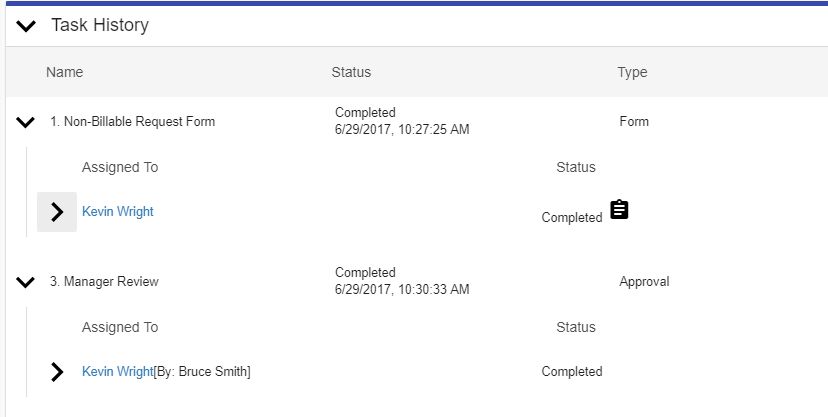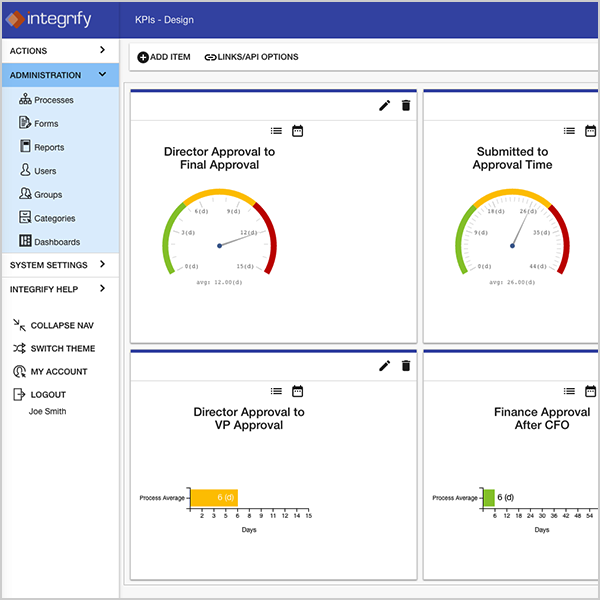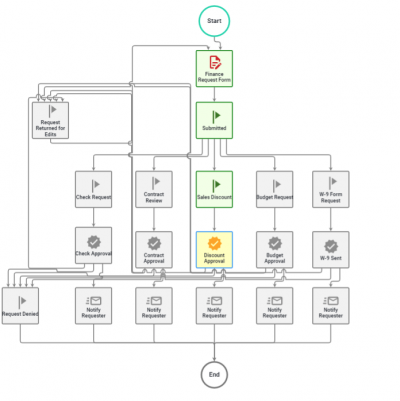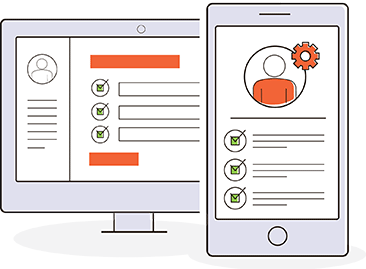Process Tracking
Tracking processes provides insight into performance, compliance, and accountability.
![]()
Process Tracking
Process tracking refers to the historical and real-time tracking of business process status and performance. Using a process automation platform to define and track processes ensures standards are followed and performance is optimized.
Historical Vs. Real-Time Tracking
Historical Tracking
Historical tracking is done via audit trails and reports. This includes detailed information about what actions have been taken, by whom, and when. Audit trails provide this depth of information on a single instance of a process while reports provide tracking information in aggregate. (Read more about Process Audit Trails and Process Reporting.)
Typically these tools are used retroactively to understand what happened vs. "what's happening now?" These tools are especially important for businesses in a regulated industry such as finance, health care, aerospace, etc.

Real-Time Tracking
Real-time tracking is done via KPI dashboards and live process view. KPI dashboards provide up-to-the-minute metrics tracking in an easily digestible format like charts and gauges. The live process view allows users to see an entire process visually and where it currently stands.

Transparency for Employees and Managers
While we've focused primarily on the benefits of tracking processes for managers, there is also great benefit in allowing employees and other end-users (vendors, partners, etc.) to track their processes and requests. By allowing users to check the status of, for instance, a request they've submitted for additional budget, they no longer need to send emails, make phone calls, or call meetings to understand where the process is.

Automating Process Tracking
Since many business processes rely on tools like email, spreadsheets, homegrown systems, and static process maps, it's often difficult to maintain process transparency. The key to eliminating guesswork is to embrace workflow automation to enforce process standards and workflow tracking.
When all business workflow is on one platform:
- Executives can get a top-down view of business performance
- Managers can address bottlenecks, errors, and other workflow issues
- Staff can see the status of their requests and reduce confusion
- Administrators can engage in continuous process improvement
Interested in Tracking Your Business Processes?
We have a variety of resources to help you on your journey to business process compliance:

